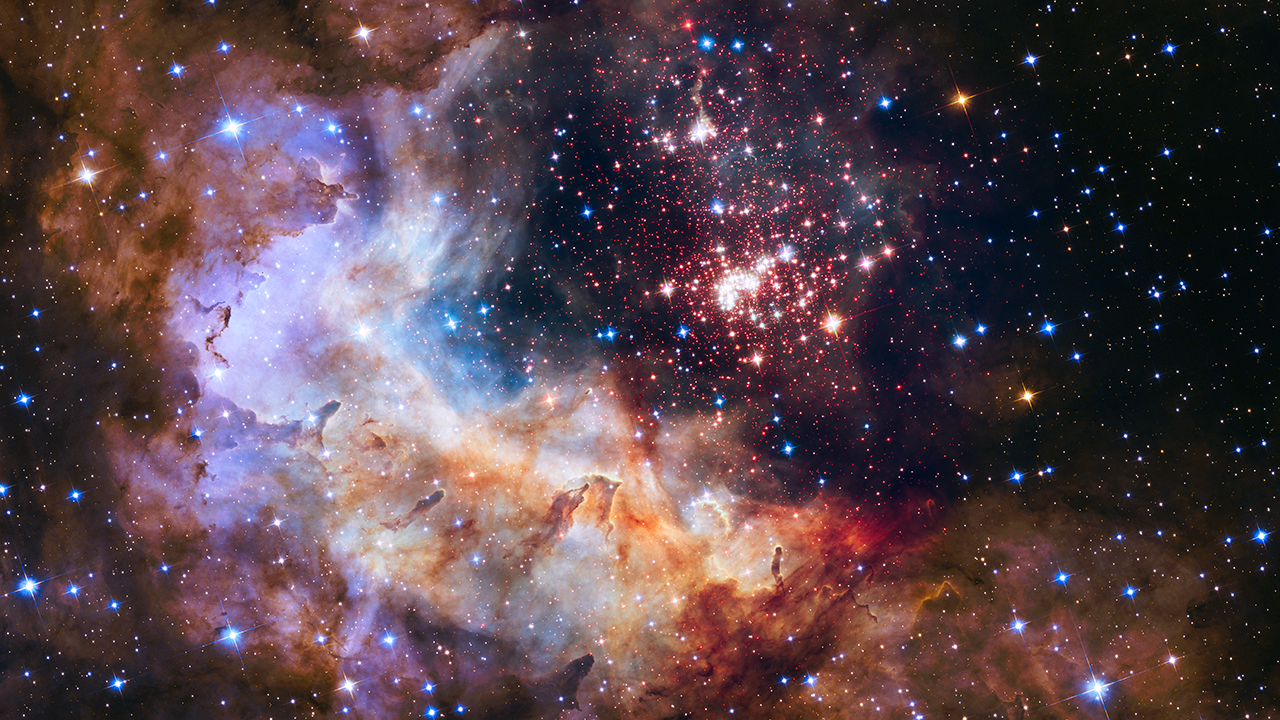Hubble pierces through the dusty veil enshrouding this sparkling stellar nursery

The Wide Field Camera 3 (WFC3) onboard the NASA/ESA Hubble Space Telescope pierced dust around this stellar nursery to reveal the dense concentration of stars in the central cluster.
Westerlund 2 is a giant cluster of young stars - about one to two million years old - that resides in a raucous stellar breeding ground known as Gum 29, located about 20,000 light years from Earth in the constellation Carina. The cluster measures between 6 light-years and 13 light-years across and contains some of our Milky Way galaxy's hottest, brightest, and most massive stars.
SPACE ID 🪪 Westerlund 2 (also known as Gum 29)🔭 Discovered in the 1960s✨ Classification: Cluster and star-forming region 📍 Located in the constellation Carina🚀 About 20,000 light-years from Earth pic.twitter.com/kIds7ZwxAo
— Canadian Space Agency (@csa_asc) November 25, 2022
In the above image, the red dots seen throughout the landscape are newly forming stars still wrapped in their gas-and-dust cocoons while the brilliant blue stars scattered throughout the image are mostly foreground stars. The image's central region blends visible-light data taken by Hubble's Advanced Camera for Surveys (ACS) with near-infrared exposures taken by the Wide Field Camera 3.
The Hubble observations show that lower-mass stars near the cluster's core do not have the large, dense clouds of dust that eventually could become planets in just a few million years. According to NASA, the absence of planet-forming clouds around stars near the center is mainly due to their bully neighbors: bright, giant stars, some of which weigh up to 80 times the Sun's mass. Their blistering ultraviolet (UV) light and hurricane-like stellar winds of charged particles blowtorch disks around neighboring lower-mass stars, dispersing the giant dust clouds.
This massive star cluster will also be an excellent laboratory for follow-up observations with NASA's new and most powerful space telescope, the James Webb Space Telescope.
- READ MORE ON:
- Hubble Westerlund 2 image
- Hubble Space Telescope










